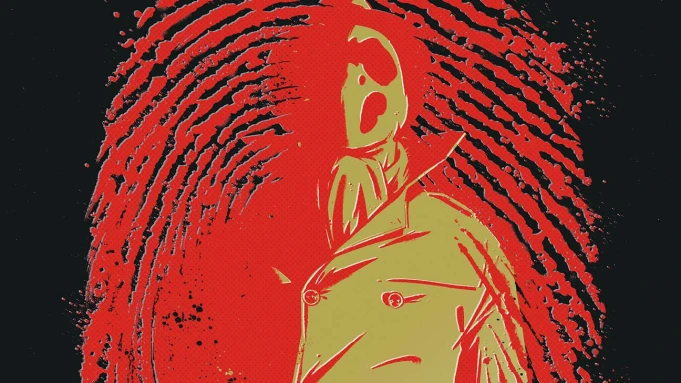When I first read the Watchmen comics a few years ago, I was enthralled with Rorschach. His character design, his principles, his grit—it all was so realistic, which isn’t something you often think when reading a comic book.
But Watchmen isn’t like other comic books, and the sequel, Rorschach, isn’t either. I thought it was only fitting we hop on the mainstream train for a while and do a comic book review of Rorschach, the 10-issue series by Tom King and Jorge Fornés.
Some Background for the Rorschach Comic
Rorschach was a serialized comic book series that lasted for ten issues from October 2020 to July 2021. It was written by Tom King, illustrated by Jorge Fornés, and colored by Dave Stewart.
Tom King is well-known for his work with Batman, Mister Miracle, and from his novel, A Once Crowded Sky. In 2018, he shared the Eisner Award for Best Writer with Marjorie Liu, author of Monstress.
Both Jorge Fornés and Dave Stewart have worked for Marvel and DC comics, most notably for Daredevil, Spiderman, Catwoman, and Captain America comics.
The Rorschach comics occur after the events of Watchmen, Doomsday Clock, and the Watchmen HBO series that aired in 2019. The story is set in 2020, right before a big presidential election where Governor Turley seeks to beat the 5-time president, Robert Redford.
Rorschach Never Dies
I was curious to read this series and do a comic book review on it because unlike some other comics that are merely FLASH and BANG, Rorschach has substance. Like, a lot.
Starting off, I was a bit confused about the concept for the series. At the end of Alan Moore and Dave Gibbons’ Watchmen, Dr. Manhattan vaporizes Rorschach for threatening to reveal the truth about Veidt. So, Rorschach—the original Rorschach—is dead by the time Tom King’s series starts.
But it quickly becomes clear that there are multiple people impersonating Rorschach, all of whom are vigilantes working to take down the corrupt powers that be and prevent another squid invasion.

The whole premise of Rorschach’s—and the other Watchmen’s—survival was that Dr. Manhattan released their souls into the world to find new bodies and continue their work. But the Walter Kovacs’ Rorschach’s legacy extended far wider than his singular soul. He embodies the rebel, the anarchist, and the idealist.
Rorschach lives on in the hearts of those who need him, of those who believe in a better future, free from tyranny. But those people also see Rorschach’s darker side, including the blood on his hands.
King’s Rorschach takes that idea and runs with it. In many ways, the comic series is as much a political and ethical commentary as it is a hard-boiled detective story.
The protagonist, an unnamed investigator, slowly unravels a vast conspiracy that reeks in the wake of the world the Watchmen left behind. King’s grim vision of 2020 has even more bloodshed and filth than our own 2020, which is really saying something.
Leaving a Legacy
Comic book historian Bradford Wright stated once that the original Rorschach’s intentions were always “a set of black-and-white values that take many shapes but never mix into shades of gray.”
But King’s Rorschach believes in the black, white, the gray in between, and blood red. In many ways, this reflects the worldview we’ve all kind of come to accept (minus, perhaps, the blood).
In the past few years, we’ve seen the break down of American politics. Core principles of democracy that were once firmly black and white, right and left, have slid into the gray areas. We’ve all overlooked things we shouldn’t have, and we’ve all gotten worked up over things that, in retrospect, didn’t matter.
That’s the legacy that King’s Rorschach leaves us. At one point, one of the main characters, Wil Myerson, says “most evil is done by people who never made up their minds to be or do either good or evil.”

And that’s the hard part. To see things as black and white as Walter Kovacs takes a keen sense of self, a set of values that don’t waver under external stress.
Thinking about my own life, I realized this is a lot harder to achieve than it seems. We’ve all told a white lie (which, in this color-coordinated analogy, is really a gray lie) because we felt the truth was irrelevant, or would hurt.
But that hurt is important. Given the truth, we can structure what’s right and wrong, what needs to be done, and what can be saved for later. So, while the original Rorschach might not live in all of us, King’s does. “Some people need masks. Some don’t,” as the book flap of the Rorschach anthology reads. Don the mask, or don’t. Either way, embracing Rorschach is as critical now as it’s ever been.
Comic Book Review of Rorschach: Conclusion
Despite paltry reviews of the 10th issue, I felt that Rorschach lived up to, and in some ways, far exceeded, my expectations.
King has done more in ten issues to flesh out a philosophy for Rorschach than Moore and Gibbon have ever done.
The art is fantastic, while grimmer than the original Watchmen comics, and I found myself unable to put the book down.
While Monstress might have been the first 10/10 I gave a comic book, Rorschach will be the second. It takes the comic book medium and uses it to tell a truly fabulous story, outlining in it’s pages a path forward for many of us who are confused or conflicted.

